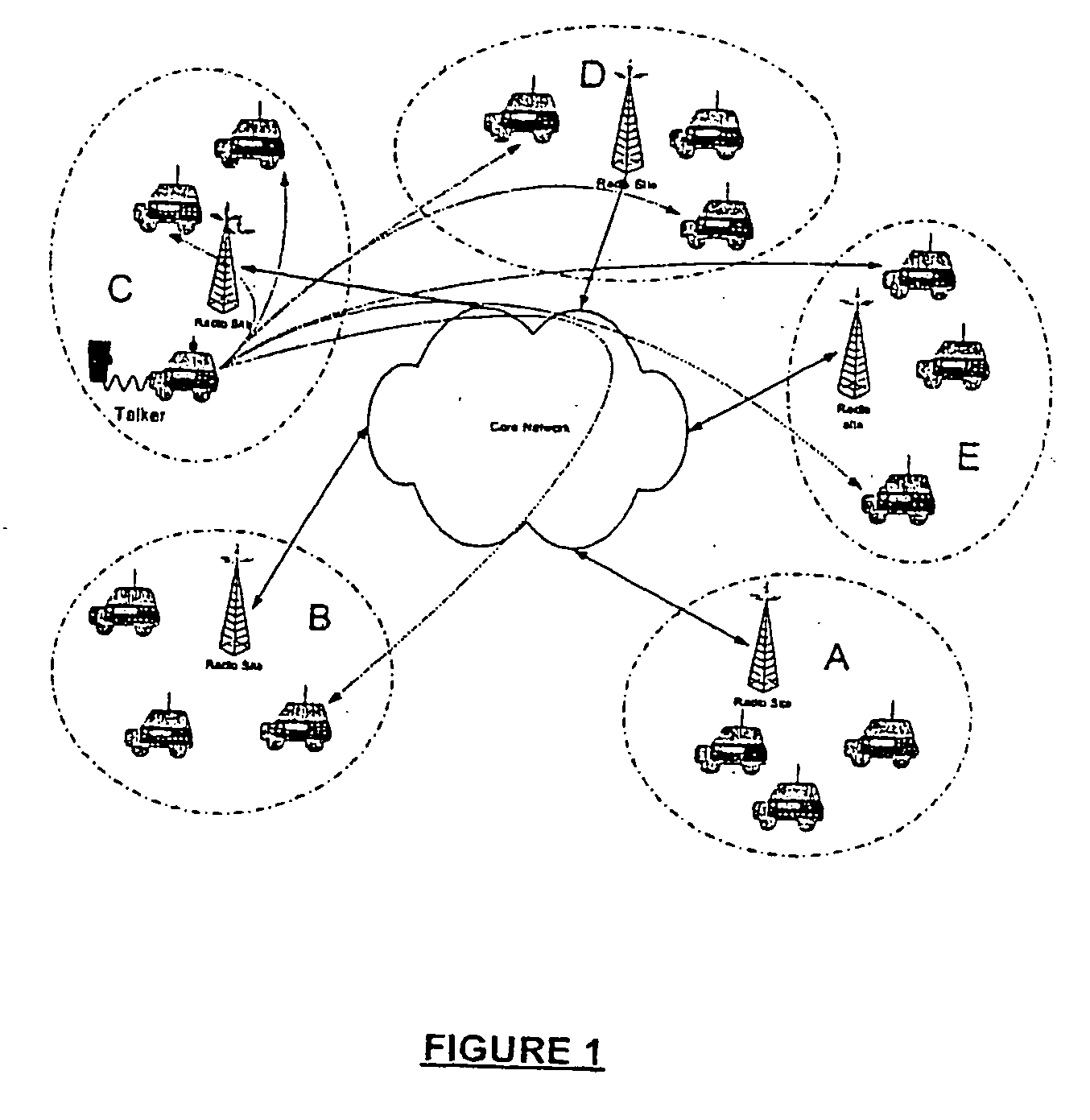Group calls in a mobile radio system
a mobile radio and group call technology, applied in the field of group call patterns in mobile radio systems, can solve the problems of unsatisfactory cost in both small and large networks, component can be a common point of failure, and system is not fully scalabl
- Summary
- Abstract
- Description
- Claims
- Application Information
AI Technical Summary
Problems solved by technology
Method used
Image
Examples
Embodiment Construction
[0017] Referring to the drawings it will be appreciated that group calls according to the invention may be implemented in many ways in a range of networks. Details of the mobile units, base stations and networks will be understood by a skilled reader and have not been included.
[0018]FIG. 1 schematically shows a mobile radio system having a core network and five base stations A-E serving mobile units. The core network is a packet network using the Internet Protocol, for example, that may be connected in various ways. Each base station generally has an irregular area of RF service that may overlap with the service areas of other stations. The units may be within range of several base stations at once but are generally captured by one or other station according to the quality or other aspects of their respective signals. The units may participate in group calls using IP multicast techniques within the core network. Packets from a talker unit are distributed between base stations in th...
PUM
 Login to View More
Login to View More Abstract
Description
Claims
Application Information
 Login to View More
Login to View More - R&D
- Intellectual Property
- Life Sciences
- Materials
- Tech Scout
- Unparalleled Data Quality
- Higher Quality Content
- 60% Fewer Hallucinations
Browse by: Latest US Patents, China's latest patents, Technical Efficacy Thesaurus, Application Domain, Technology Topic, Popular Technical Reports.
© 2025 PatSnap. All rights reserved.Legal|Privacy policy|Modern Slavery Act Transparency Statement|Sitemap|About US| Contact US: help@patsnap.com



